Insertgeniuspunhere - :|

More Posts from Insertgeniuspunhere and Others
The only Supernatural finale airing on November 19th that matters is Buzzfeed Unsolved Supernatural
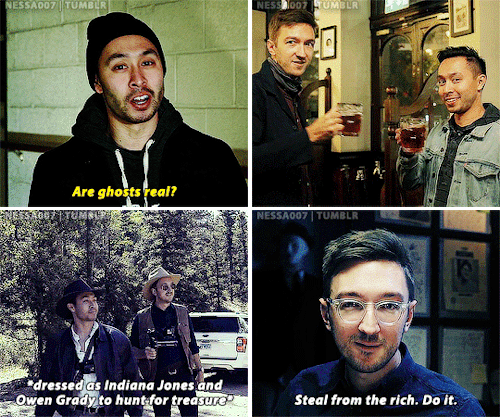



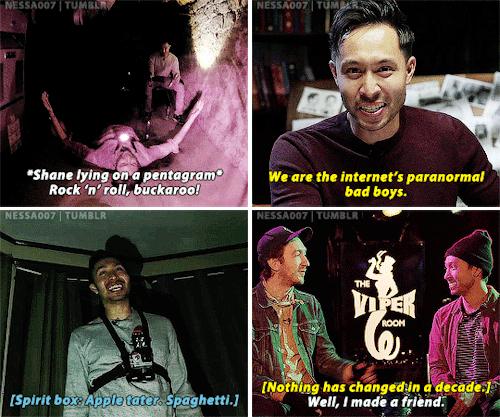


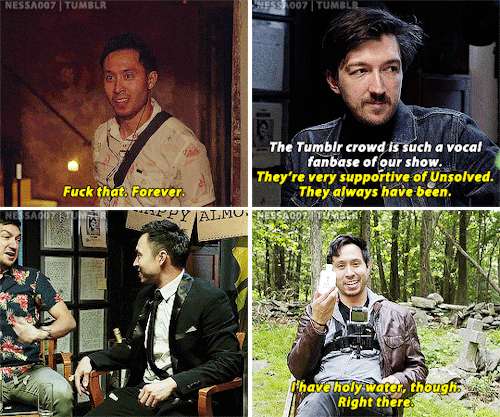

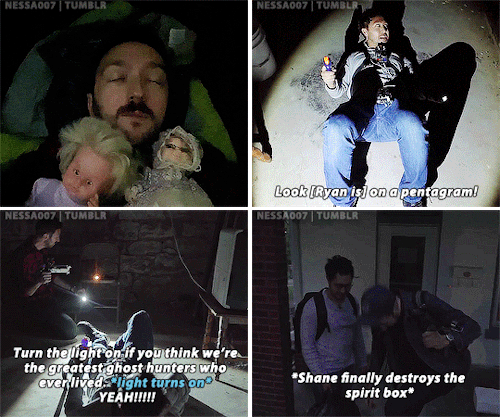
THANK YOU, RYAN BERGARA AND SHANE MADEJ! Buzzfeed Unsolved (2016 - 2021)

today’s date is the 3rd? what’s next, the 4th? the 5th? the minor fall, the major lift?
Since I’m not seeing her name nearly enough on the press, let’s give the attention Katie Bouman deserves. Thanks to her, we are now possible to see the first ever image of a black hole, something that people talked 200 years ago for the first time. It’s no longer a myth. We are girls and we can be whatever we want to be. Einstein would be proud of you, Katie. Thank you!


Here you can see a huge stack of hard drives she used for Messier 87’s black hole image data.
Did you hear about the two asteroids having relationship problems? Just as they were entering the atmosphere they broke up.
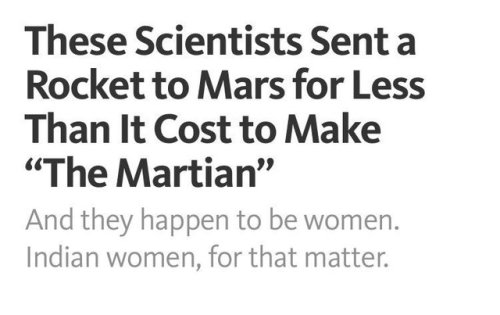
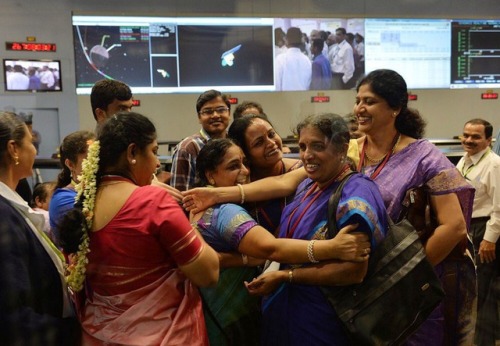
hidden figures vol. 2
do emo shadowhunters wear white clothes?










THANK YOU FOR 8 AMAZING SEASONS! BROOKLYN NINE-NINE (2013 - 2021)
Five NASA Technologies at the 2017 Consumer Electronics Show
This week, we’re attending the International Consumer Electronics Show (CES), where we’re joining industrial pioneers and business leaders from across the globe to showcase our space technology. Since 1967, CES has been the place to be for next-generation innovations to get their marketplace debut.
Our technologies are driving exploration and enabling the agency’s bold new missions to extend the human presence beyond the moon, to an asteroid, to Mars and beyond. Here’s a look at five technologies we’re showing off at #CES2017:
1. IDEAS
Our Integrated Display and Environmental Awareness System (IDEAS) is an interactive optical computer that works for smart glasses. The idea behind IDEAS is to enhance real-time operations by providing augmented reality data to field engineers here on Earth and in space.

This device would allow users to see and modify critical information on a transparent, interactive display without taking their eyes or hands off the work in front of them.

This wearable technology could dramatically improve the user’s situational awareness, thus improving safety and efficiency.

For example, an astronaut could see health data, oxygen levels or even environmental emergencies like “invisible” ethanol fires right on their helmet view pane.

And while the IDEAS prototype is an innovative solution to the challenges of in-space missions, it won’t just benefit astronauts—this technology can be applied to countless fields here on Earth.
2. VERVE
Engineers at our Ames Research Center are developing robots to work as teammates with humans.

They created a user interface called the Visual Environment for Remote Virtual Exploration (VERVE) that allows researchers to see from a robot’s perspective.

Using VERVE, astronauts on the International Space Station remotely operated the K10 rover—designed to act as a scout during NASA missions to survey terrain and collect science data to help human explorers.

This week, Nissan announced that a version of our VERVE was modified for its Seamless Autonomous Mobility (SAM), a platform for the integration of autonomous vehicles into our society. For more on this partnership: https://www.nasa.gov/ames/nisv-podcast-Terry-Fong
3. OnSight
Did you know that we are leveraging technology from virtual and augmented reality apps to help scientists study Mars and to help astronauts in space?

The Ops Lab at our Jet Propulsion Laboratory is at the forefront of deploying these groundbreaking applications to multiple missions.

One project we’re demonstrating at CES, is how our OnSight tool—a mixed reality application developed for the Microsoft HoloLens—enables scientists to “work on Mars” together from their offices.

Supported by the Mars 2020 and Curiosity missions, it is currently in use by a pilot group of scientists for rover operations. Another HoloLens project is being used aboard the International Space Station to empower the crew with assistance when and where they need it.

At CES, we’re also using the Oculus Rift virtual reality platform to provide a tour from the launchpad at our Kennedy Space Center of our Space Launch System (SLS). SLS will be the world’s most powerful rocket and will launch astronauts in the Orion Spacecraft on missions to an asteroid and eventually to Mars. Engineers continue to make progress aimed toward delivering the first SLS rocket to Kennedy in 2018.
4. PUFFER
The Pop-Up Flat Folding Explorer Robot, PUFFER, is an origami-inspired robotic technology prototype that folds into the size of a smartphone.

It is a low-volume, low-cost enhancement whose compact design means that many little robots could be packed in to a larger “parent” spacecraft to be deployed on a planet’s surface to increase surface mobility. It’s like a Mars rover Mini-Me!

5. ROV-E
Our Remote Operated Vehicle for Education, or ROV-E, is a six-wheeled rover modeled after our Curiosity and the future Mars 2020 Rover.

It uses off-the-shelf, easily programmable computers and 3D-printed parts. ROV-E has four modes, including user-controlled driving to sensor-based hazard-avoidance and “follow me” modes. ROV-E can answer questions about Mars and follow voice commands.
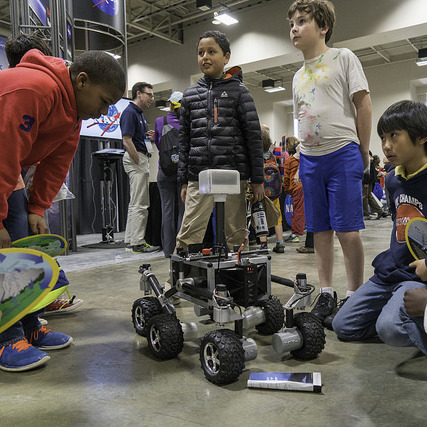
ROV-E was developed by a team of interns and young, up-and-coming professionals at NASA’s Jet Propulsion Laboratory who wanted to build a Mars rover from scratch to help introduce students and the public to Science, Technology, Engineering & Mathematics (STEM) careers, planetary science and our Journey to Mars.
Make sure to follow us on Tumblr for your regular dose of space: http://nasa.tumblr.com
-
 its-always-the-witching-hour liked this · 1 year ago
its-always-the-witching-hour liked this · 1 year ago -
 the-gongoozlerblehrg liked this · 1 year ago
the-gongoozlerblehrg liked this · 1 year ago -
 nika15677 liked this · 1 year ago
nika15677 liked this · 1 year ago -
 acidalkaliine liked this · 1 year ago
acidalkaliine liked this · 1 year ago -
 worldoflunatriix liked this · 1 year ago
worldoflunatriix liked this · 1 year ago -
 enchant-er liked this · 1 year ago
enchant-er liked this · 1 year ago -
 beepbeepwhyamilikethis liked this · 1 year ago
beepbeepwhyamilikethis liked this · 1 year ago -
 fandomnerd369 liked this · 1 year ago
fandomnerd369 liked this · 1 year ago -
 dissonantharmony liked this · 1 year ago
dissonantharmony liked this · 1 year ago -
 marzonsaturn liked this · 1 year ago
marzonsaturn liked this · 1 year ago -
 hbear14 liked this · 2 years ago
hbear14 liked this · 2 years ago -
 rainbowglitter liked this · 2 years ago
rainbowglitter liked this · 2 years ago -
 cognitiveleague liked this · 2 years ago
cognitiveleague liked this · 2 years ago -
 ash777700000 liked this · 2 years ago
ash777700000 liked this · 2 years ago -
 steve-cat liked this · 2 years ago
steve-cat liked this · 2 years ago -
 noplacelikelondon58 liked this · 2 years ago
noplacelikelondon58 liked this · 2 years ago -
 cheesethehawk liked this · 2 years ago
cheesethehawk liked this · 2 years ago -
 mila--luna liked this · 2 years ago
mila--luna liked this · 2 years ago -
 rocket-fika liked this · 2 years ago
rocket-fika liked this · 2 years ago -
 gingerspilled reblogged this · 2 years ago
gingerspilled reblogged this · 2 years ago -
 gingerspilled liked this · 2 years ago
gingerspilled liked this · 2 years ago -
 kittymittenz liked this · 2 years ago
kittymittenz liked this · 2 years ago -
 oliversical liked this · 2 years ago
oliversical liked this · 2 years ago -
 kieryn22 liked this · 2 years ago
kieryn22 liked this · 2 years ago -
 ghostswithshaneandryan reblogged this · 2 years ago
ghostswithshaneandryan reblogged this · 2 years ago -
 artemiswaves liked this · 2 years ago
artemiswaves liked this · 2 years ago -
 roosterjazz liked this · 2 years ago
roosterjazz liked this · 2 years ago -
 aithxsa liked this · 2 years ago
aithxsa liked this · 2 years ago -
 sawtiism liked this · 2 years ago
sawtiism liked this · 2 years ago -
 oldmanpusspuss liked this · 2 years ago
oldmanpusspuss liked this · 2 years ago -
 violetstar250 reblogged this · 2 years ago
violetstar250 reblogged this · 2 years ago -
 eldritch-emily liked this · 2 years ago
eldritch-emily liked this · 2 years ago -
 movedto-moonbasealpha liked this · 2 years ago
movedto-moonbasealpha liked this · 2 years ago -
 winterstorm-987 liked this · 2 years ago
winterstorm-987 liked this · 2 years ago -
 nothing-here-to-look-at liked this · 2 years ago
nothing-here-to-look-at liked this · 2 years ago -
 choowhy liked this · 2 years ago
choowhy liked this · 2 years ago -
 dream-fucker liked this · 2 years ago
dream-fucker liked this · 2 years ago -
 shinsowou reblogged this · 2 years ago
shinsowou reblogged this · 2 years ago -
 shinsowou liked this · 2 years ago
shinsowou liked this · 2 years ago -
 stutteringb-b-bill liked this · 2 years ago
stutteringb-b-bill liked this · 2 years ago -
 luckynightmares liked this · 2 years ago
luckynightmares liked this · 2 years ago -
 thefandomshithead liked this · 2 years ago
thefandomshithead liked this · 2 years ago -
 elritze liked this · 2 years ago
elritze liked this · 2 years ago -
 apple8ees liked this · 2 years ago
apple8ees liked this · 2 years ago -
 lazyladyworld reblogged this · 2 years ago
lazyladyworld reblogged this · 2 years ago -
 vicstuf liked this · 2 years ago
vicstuf liked this · 2 years ago -
 of-frogs-and-fools liked this · 2 years ago
of-frogs-and-fools liked this · 2 years ago -
 kweska liked this · 2 years ago
kweska liked this · 2 years ago -
 smol-book-nerd liked this · 2 years ago
smol-book-nerd liked this · 2 years ago

